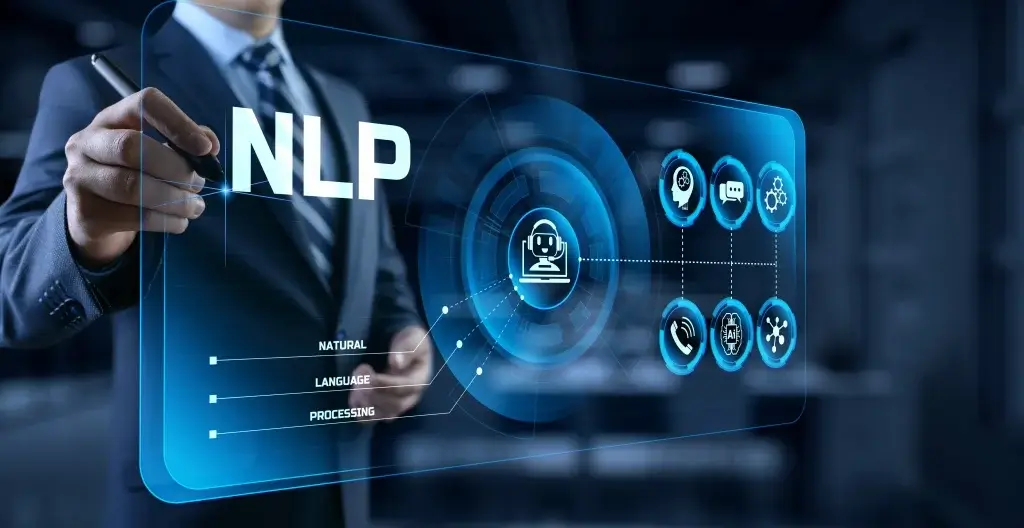NLP; NLU and NLG Conversational Process Automation Chatbots explained by Rajai Nuseibeh botique ai

You can learn more about custom NLU components in the developer documentation, and be sure to check out this detailed tutorial. This book is for managers, programmers, directors – and anyone else who wants to learn machine learning. To pass the test, a human evaluator will interact with a machine and another human at the same time, each in a different room.
In conversational AI interactions, a machine must deduce meaning from a line of text by converting it into a data form it can understand. This allows it to select an appropriate response based on keywords it detects within the text. Other Natural Language Processing tasks include text translation, sentiment analysis, and speech recognition. Once a customer’s intent is understood, machine learning determines an appropriate response. This response is converted into understandable human language using natural language generation.
The future for language
It has become really helpful resolving ambiguity in language and adds numeric structure to the data for many downstream applications. Natural language processing is a subset of AI, and it involves programming computers to process massive volumes of language data. It involves numerous tasks that break down natural language into smaller elements in order to understand the relationships between those elements and how they work together. Common tasks include parsing, speech recognition, part-of-speech tagging, and information extraction. The two terms are sometimes confused, but they cover different processes.
Today we’ll review the difference between chatbots and conversational AI and which option is better for your business. With the advent of ChatGPT, it feels like we’re venturing into a whole new world. Everyone can ask questions and give commands to what is perceived as an “omniscient” chatbot. Big Tech got shaken up with Google introducing their LaMDA-based “Bard” and Bing Search incorporating GPT-4 with Bing Chat.
Which natural language capability is more crucial for firms at what point?
Both types of training are highly effective in helping individuals improve their communication skills, but there are some key differences between them. NLP offers more in-depth training than NLU does, and it also focuses on teaching people how to use neuro-linguistic programming techniques in their everyday lives. Another difference is that NLP breaks and processes language, while NLU provides language comprehension. Thus informing the user accordingly and handling the utterance per sentence. The input can be any non-linguistic representation of information and the output can be any text embodied as a part of a document, report, explanation, or any other help message within a speech stream.
Figure 4 depicts our sample of 5 use cases in which businesses should favor NLP over NLU or vice versa. NLP stands for neuro-linguistic programming, and it is a type of training that helps people learn how to change the way they think and communicate in order to achieve their goals. However, there are still many challenges ahead for NLP & NLU in the future. One of the main challenges is to teach AI systems how to interact with humans. NLU can be used in many different ways, including understanding dialogue between two people, understanding how someone feels about a particular situation, and other similar scenarios.
This can have a profound impact on a chatbot’s ability to carry on a successful conversation with a user. As we summarize everything written under this NLU vs. NLP article, it can be concluded that both terms, NLP and NLU, are interconnected and extremely important for enhancing natural language in artificial intelligence. Machines programmed with NGL help in generating new texts in addition to the already processed natural language. They are so advanced and innovative that they appear as if a real human being has written them. In recent years, with so many advancements in research and technology, companies and industries worldwide have opted for the support of Artificial Intelligence (AI) to speed up and grow their business.

In practical applications such as customer support, recommendation systems, or retail technology services, it’s crucial to seamlessly integrate these technologies for more accurate and it comes to relations between these techs, NLU is perceived as an extension of NLP that provides the foundational techniques and methodologies for language processing. NLU builds upon these foundations and performs deep analysis to understand the meaning and intent behind the language. The distinction between these two areas is important for designing efficient automated solutions and achieving more accurate and intelligent systems. Though looking very similar and seemingly performing the same function, NLP and NLU serve different purposes within the field of human language processing and understanding. The key distinctions are observed in four areas and revealed at a closer look.
Natural Language Generation (NLG)
Read more about https://www.metadialog.com/ here.
- Logic is applied in the form of an IF-THEN structure embedded into the system by humans, who create the rules.
- Natural Language Generation, or NLG, takes the data collated from human interaction and creates a response that a human can understand.
- Moreover, there is often no internal standardization on how to write such comments.
- This challenge is too significant for businesses to ignore, as it holds the key to untold insights and opportunities.

